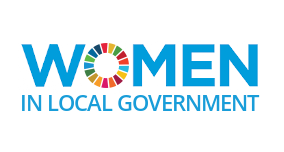About women in local government project
About women in local government project
 The Women in Local Government website is the outcome of a multi-year project undertaken by UN Women to generate knowledge on women’s representation in local government and improve its measurement and monitoring. The initiative closes a major data and knowledge gap and supports the realization of women’s equal rights to political participation, and equal share of power between women and men, at all levels of government, as guaranteed in the international normative framework. This work has been generously supported by the Governments of Sweden and Switzerland.
The Women in Local Government website is the outcome of a multi-year project undertaken by UN Women to generate knowledge on women’s representation in local government and improve its measurement and monitoring. The initiative closes a major data and knowledge gap and supports the realization of women’s equal rights to political participation, and equal share of power between women and men, at all levels of government, as guaranteed in the international normative framework. This work has been generously supported by the Governments of Sweden and Switzerland.The project was initiated in the anticipation of the 2030 Agenda for sustainable development, to advocate for a more comprehensive view and measurement of women’s political participation. The past three decades have focused on an elite group of women members of parliaments, while a more diverse and larger group of women elected in local government, in the millions, remained uncounted and their contributions to local communities unrecognized. The role of this project grew significantly with the inclusion of the SDG indicator 5.5.1b (on women’s representation in local government) in the SDG monitoring framework as a Tier III indicator (an indicator for which the methodology or data collection standards do not yet exist and comparable data are scarce). UN Women was designated as the sole custodian agency for the indicator, in charge of developing the methodology of the indicator, conducting the global data compilation and reporting for the indicator and coordinating national statistical capacity building. The indicator’s methodology was developed by undertaking extensive research on local government organization around the world, mapping of current practices in national data collection and regional data compilation, and wide consultation with national and international stakeholders through the means of technical and expert group meetings, regional workshops and global conferences on gender statistics. As a result of these efforts, in November 2017, the indicator was re-classified by the Inter-Agency and Expert Group on SDG Indicators (IAEG-SDG) from Tier III to Tier II (indicators with developed methodologies and data collection standards but for which data are not widely available).
The first data compilation for SDG indicator 5.5.1b was undertaken by UN Women in 2018, with the support of UN Regional Commissions. By 2019, globally comparable data was made available for over 130 countries, leading to the reclassification of the indicator as Tier I (indicators with developed methodologies and data available for a majority of countries), and providing a baseline for monitoring and analysis of national, regional and global future trends on women’s representation in local government.
The project continues to compile and disseminate data on SDG indicator 5.5.1b on a regular basis while generating unique knowledge beyond the SDG indicator 5.5.1b measurement and monitoring. Statistical products targeted to increase the capacity of National Statistical Offices to collect and use political participation data, including electoral administrative data and survey data, are developed as part of the project. We also look forward to working with countries with no data and achieve full country coverage for SDG indicator 5.5.1b. Finally, we are making available, for the first time, information on local government organizations, electoral systems and legislated quotas used at local level, and examine how these factors impact women’s representation at local level.
The project promotes women’s participation in local government through three focus areas:
- Generate knowledge on local government organization, electoral systems and legislated quotas at local level – three aspects with a major effect on women’s representation in local government. A series of country local government profiles, developed based on a review of national legal frameworks and updated continuously, can be accessed here. Information on legislated gender quotas is shared here.
- Develop global methodologies for data collection and indicators on women’s political participation and its challenges, and their consistent use across countries, to enable sound measurement and global comparability of data. Highlights and new measurement developments – such as the methodology of SDG indicator 5.5.1b, measurement of participation in political and public affairs, and development and use of electoral data systems – can be accessed here.
- Improve global understanding of women’s participation at local level through data compilation, dissemination and analysis. Up-to-date data on women’s representation in local government is compiled in partnership with UN Regional Commissions and showcased and made available here. Research and analysis papers and articles are highlighted here.
The project team brings together a wide range of expertise within the UN Women’s Governance and Participation Section and regional and country offices, including on women’s political participation and electoral support, legal review and analysis, measurement and monitoring, and statistical analysis.
The team works together with national, regional and global partners, such as National Statistical Offices (NSOs), Electoral Management Bodies, UN Regional Commissions, United Nations Development Programme (UNDP), United Nations Statistics Division (UNSD), Inter-Parliamentary Union (IPU), and national and international civil society organizations. In particular, the partnership between UN Women and UN Regional Commissions has been a key factor in increasing the availability of data for SDG indicator 5.5.1b and the capacity of NSOs, including through joint data compilation and regional training workshops.
Continued research and innovation of the Women in Local Government project have been made possible thanks to the generous support of the Governments of Sweden and Switzerland.